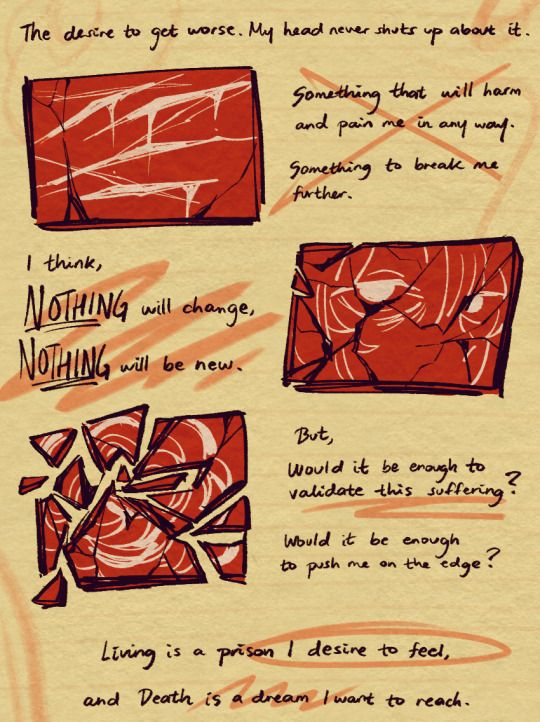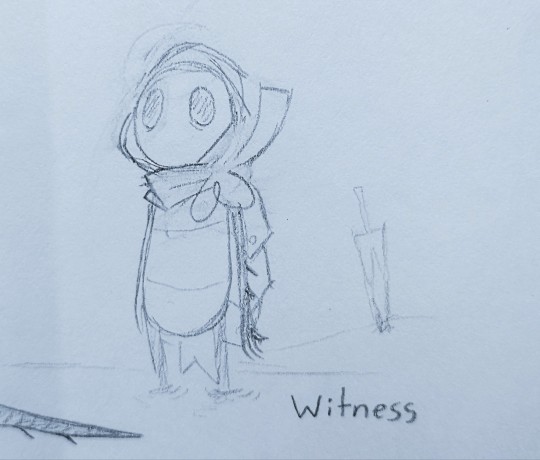#suicide ideation
Explore tagged Tumblr posts
Text
they should invent a way that makes suicide fucking easy
#vent#tw depressing stuff#tw depression#depressing shit#mentally exhausted#tw self destructive thoughts#tw self destructive behavior#tw self destruction#i hate it here#tw suicide ideation#tw suicide#suicide ideation#committing suicide
1K notes
·
View notes
Text

hey guys guess what i played recently & really liked
alt vers below

#signed my alt user out of habit bc thats my bluesky & also where i post more on here. whoops!#follow sprtruechara as well ig i talk more there#isat#in stars and time#isat siffrin#in stars and time siffrin#siffrin fanart#isat fanart#in stars and time fanart#he draws#suicide ment#suicide ideation
135 notes
·
View notes
Text
the thing is. bobby died in that fire. not in the traditional sense, but he did. a part of him is buried in minnesota, and they all know that. there is soil under athena and buck's fingernails from YEARS of trying so hard to dig him out, bring him back to life, but bobby knows it's just a rotten carcass they're trying to save. what are the amends he's made compared to the peaceful silence of six feet under without the voices in the back of his head? what are the confessions he made compared to the nights of unanswered prayers for his painful death? what is the ever growing hellfire he believes he's going to suffer through for the great sin of suicide compared to the fire that burned his whole family alive?
159 notes
·
View notes
Text
Im thinking about suicide a lot these days
#mental illness#sh#sorry for being depressing#tw depressing stuff#tw depressing thoughts#im sad and tired#sad thoughts#suicide ideation#self destruction#tw sui ideation#suicidal#tw sui implied#tw sui vent#sewerslidal#self h@rm#selfharm#suic1de#sewer slide#sewercide#sewersidal
236 notes
·
View notes
Text
John: I don't want to kill Yellow! Could you imagine wanting to kill a part of yourself?!
Arthur fixated on killing Larson because of his own self hatred over Faroe's death: ........... No that would be crazy.
#arthur lester malevolent#john doe malevolent#malevolent#malevolent podcast#suicide ideation#buddy it's the queue you gotta let me go#Thinking again about SupposedToBeWriting's Oh I love you so much It scares me half to death#and John watching an alternate version of himself get brutally murdered by Arthur who thinks it's another Arthur#that never came back after abandonning Faroe at birth#malevolent s4 spoilers#malevolent spoilers
160 notes
·
View notes
Text
By: Leor Sapir
Published: Dec 5, 2024
An astonishing moment took place yesterday at the Supreme Court during oral arguments in U.S. v. Skrmetti, the case that challenges Tennessee’s ban on pediatric sex “change” procedures. Chase Strangio, the American Civil Liberties Union’s attorney, admitted to Justice Samuel Alito that the narrative around the risk of suicide in transgender-identified youth is false.
Before Alito and Strangio’s exchange, Justice Sonia Sotomayor had asked U.S. Solicitor General Elizabeth Prelogar about minors with gender dysphoria who “attempt suicide.” Prelogar responded that the “rates of suicide”—not “attempts,” but actual death by suicide—in that population “are striking.” Given the government’s support for puberty blockers and cross-sex hormones as treatments for gender dysphoric youth, the clear implication of Prelogar’s remarks was that such interventions are known to prevent these tragic and, in her view, common events.
JUSTICE SOTOMAYOR: Some—some children suffer incredibly with gender dysphoria, don’t they? GENERAL PRELOGAR: Yes. It’s a very serious medical condition. JUSTICE SOTOMAYOR: I think some attempt suicide? GENERAL PRELOGAR: Yes. The rates of suicide are—are striking—
This claim—that rates of suicide among gender-dysphoric young people are high—constitutes the trans suicide myth.
When it was Strangio’s turn, Justice Alito asked, “Do you maintain that the procedures and medications in question reduce the risk of suicide?” The transgender-identifying attorney responded:
MR. STRANGIO: I do, Justice Alito, maintain that the medications in question reduce the risk of depression, anxiety, and suicidality, which are all indicators of potential suicide.
Note that Alito asked about suicide, and Strangio answered about suicidality—the latter of which refers to thoughts of or intent to attempt suicide. Though suicide would be preceded by suicidality, research does not show that suicidality is a reliable predictor of suicide. According to the Centers for Disease Control and Prevention, in 2022, for every one person who committed suicide, 270 people “seriously thought about suicide” and 33 attempted it.
Strangio’s pivot to suicidality is a standard tactic of gender medicine activists in public debates. They exploit public ignorance about the difference between suicidality—thinking about suicide, attempting suicide, using gestures of self-harm as a cry for help or as a form of emotional manipulation—and actual death by suicide.
Unfortunately for Strangio, Justice Alito had done his homework. Citing the U.K.’s Cass Review, Alito observed that “there is no evidence that gender-affirmative treatments reduce suicide.”
Then came Strangio’s remarkable concession:
MR. STRANGIO: What I think that is referring to is there is no evidence in some—in the studies that this treatment reduces completed suicide. And the reason for that is completed suicide, thankfully and admittedly, is rare and we’re talking about a very small population of individuals with studies that don’t necessarily have completed suicides within them. However, there are multiple studies, long-term longitudinal studies that do show that there is a reduction in—in suicidality . . .
Here, the ACLU’s star attorney on trans issues seems to be at odds with Solicitor General Prelogar, who had said that the “rates” of “suicide” among gender-dysphoric youth were “striking.” Strangio admits, under oath, that suicide is actually “rare,” and that the research purporting to demonstrate benefits from hormones concerns suicidality, not suicide. Strangio’s use of “admittedly” is also striking, as it suggests the attorney is aware that claims about suicide prevention through sex “change” are false.
Strangio’s claim that the evidence shows these treatments reduce suicidality is also false. Some studies claim to find that, but existing systematic reviews of evidence have concluded that these claims are not credible due to methodological problems in the research. The Cass Review explicitly cites “major methodological problems” as a reason to be skeptical of studies claiming that “gender-affirming care” reduces “suicidality.” I suspect that Strangio knows this, as well.
None of this means that we shouldn’t take suicidal attempts or ideation seriously. Of course we should. But to equate these behaviors with completed suicide and to use that equivalence as a justification for harmful and experimental treatments on vulnerable adolescents is extremely irresponsible.
It’s hard to exaggerate the importance of Strangio’s concessions yesterday. Transgender activists and their media allies, gender clinicians, and Democrats have consistently and emphatically told the public that suicide is a serious risk for transgender-identified youth and that “gender-affirming care” is necessary to mitigate that risk.
Strangio’s ACLU itself has said this on many occasions, as I previously reported. The ACLU of Wisconsin, for instance, issued a press release in 2023, stating: “Research shows it [denying youth access to ‘gender-affirming care’] contributes to… suicide. On the contrary, transgender youth whose families support their gender identity have a 52% decrease in suicidal thoughts [and] a 48% decrease in suicide attempts.” The following year, the ACLU of South Carolina quoted a physician who said, “Gender-affirming care is life-saving suicide prevention care.”
More egregiously, clinicians have used the suicide threat to cajole parents into agreeing to irreversible medical interventions that can potentially leave their kids sterile, sexually dysfunctional, disfigured, and with lifelong impacts on bone and cardiovascular health. “Would you rather have a dead daughter or a live transgender son?” they ask the parents, sometimes in front of the child.
Crucially, the risk these activists invoke is suicide, not suicidality. Parents are asked to weigh the amputation of their daughters’ breasts or the sterilization of their sons against losing their kids to suicide—any parent’s worst nightmare. If the risk in question were suicidality, that would likely change their calculus.
Consider, as a representative example of activists’ claims, these remarks by Diane Ehrensaft, a San Francisco-based psychologist and pioneer of the “gender-affirming” approach in the United States, in her 2016 book, The Gender Creative Child:
Time and again I watch youth weigh keeping their fertility options open against postponing obtaining their true gender identity, and time and again I watch the decision to affirm their gender and forgo fertility win out. Can a thirteen-year-old truly know that? Yes, I think so, in the same way that a thirteen-year-old is capable of making a choice that will save their life even if it means losing a limb or living with one kidney. We could say, “Well, yes, but that’s a matter of life and death.” So is this for many gender creative youth—to affirm their gender or face crushing despair.
The existing research on the link between gender-related distress and suicide undermines this claim. It includes four findings: first, individuals who identify as transgender or experience distress associated with their sex are at higher risk of suicide than age-matched controls. Second, however, that risk, though elevated, is quite low, as Strangio now concedes. (For example, the suicide rate among youths referred to the U.K.’s Gender Identity Development Service between 2010 and 2020 was 0.03 percent.) Third, the elevated risk is best explained by psychiatric comorbidities, which are extremely common in this population and hypothesized to contribute to transgender identification in youth. Fourth, adults who undergo full “gender reassignment” remain at elevated risk for suicide relative to matched controls even years after their procedures.
Suicide, in other words, is a complex problem that requires nuance and understanding. Suicide-prevention experts have long argued that talking about suicide in the way that Strangio and the ACLU have done is irresponsible: suicide is a socially contagious behavior, and telling youth in distress that it is the expected response to their problems can encourage the very behavior these activists purportedly want to prevent.
In 2017, major LGBT rights organizations partnered with suicide prevention experts and groups to produce a guideline for how to discuss suicide in this population. Among their recommendations:
DON’T attribute a suicide death to a single factor (such as bullying or discrimination) or say that a specific anti-LGBT law or policy will “cause” suicide. Suicide deaths are almost always the result of multiple overlapping causes, including mental health issues that might not have been recognized or treated. Linking suicide directly to external factors like bullying, discrimination or anti-LGBT laws can normalize suicide by suggesting that it is a natural reaction to such experiences or laws. It can also increase suicide risk by leading at-risk individuals to identify with the experiences of those who have died by suicide.
I have since come to learn—through a source close to the movement with contacts at the ACLU—that suicide researchers supportive of LGBT rights are deeply concerned with how transgender activists like Strangio have bullied advocacy group leaders and manipulated the suicide issue to serve their own personal agendas. Strangio and other transgender activists are continuously undermining public trust in the ability of these groups to generate or endorse credible suicide prevention guidelines.
But the narrative is too politically useful for many of these activists to abandon. Shorn of any ability to persuade the public of their incoherent ideas about sex and gender, and unconcerned that their practices violate centuries of accumulated knowledge about healthy child development, transgender activists need the suicide narrative to be true—or at least believable. How else can they get parents to submit their kids to the cult of the scalpel and syringe?
#Leor Sapir#trans or suicide#suicide#suicidality#suicide ideation#Chase Strangio#ACLU#gender ideology#queer theory#gender identity ideology#affirm or suicide#gender affirmation#gender affirming care#gender affirming healthcare#Cass review#Cass report#suicide narrative#religion is a mental illness
42 notes
·
View notes
Text


Silent prayer
#messyr#doodle#vent art#artists on tumblr#neurodiverse stuff#bpd#borderline personality disorder#i just need to get this off my head#suicide ideation#tw sui ideation
323 notes
·
View notes
Text

these tags were about donating to ao3. really well-adjusted userbase on here
226 notes
·
View notes
Text
J's Nightmare Sequence in the Radiation Au
Tw: Suicide, Suicide Ideation
Shes chasing a drone and she knows why. The solver told her to. The solver told her so she chases. But this drone is good at hiding. This drone is good fleeing. This drone is good with her steps the same way she is. This drone has the same pattern in her walk that she does. But its small, where J is clawing and thundering and sleek, this drone is nimble and thin and stunted. And as J watches and chases and hunts, she slowly and surely catches tail of this drone. Rounding a corner too fast she clips the shoulder of the drone with her claw and topples with it. Her wings thud to the ground as she pounces. And finally, finally she can see fully who this drone is that ran from her instead of facing the truth. Instead of facing what she caused. Because it's her. This drone is her, looking up at her is her own scared face. The face she only saw in the reflection of cups and glasses. It stares vividly as she bites its neck. Ripping it's circuits from it's jugular as oil spills everywhere. And it screams. She hears her own voice scream, knowing that no one will save her, and no one will come. She killed this drone, like she killed the other drones before, like she killed her coworkers at the manor, like she killed Tessa, like she killed herself. Because thats what she is, a filthy killer.
Snippet I wrote for Arum Spadix, the fanfic me and @uzibrainrot are writing!!!!
#suicide#suicide ideation#suicidal ideation#main character death#<- but shes alive in the au. you'll see#radiation au#rawr au#serial designation j#j murder drones#sd j#murder drones j#md j#j md#murder drones#murder drones fanfic#grims writing
41 notes
·
View notes
Text

suicidal ideation needs to be checked on and monitored
#vent#isat#isat siffrin#siffrin#paper craft#did u know i'm getting a lil red wiggly line under 'ideation'?? thats the actual term u dummy dumb computer#suicide ideation
86 notes
·
View notes
Text





im back to bugposting babyyyy
#hollow knight#hk#hollow knight spoilers#tw suicide ideation#suicide ideation#<- implied#the collector#hk collector#hk shade#hk lace#lace hk#hornet#hk hornet#hornet hk#lacenet#tiso#hk tiso#quirrel#hk quirrel#deeply sorry for that quirrel drawing. he makes me so sad#also. LACENET NUMERO UNO!!!!!!!!!!!!#I LOVE ALL THESE GOOBERS I HAVENT DRAWN THEM IN SO LONG#hk spoilers#tiso hk#quirrel hk
291 notes
·
View notes
Text
me the minute i'm hit with over exhaustion: i need to die bc nobody needs me and im tired of pretending to be capable of being human
#screaming at my brain to go to sleep bc this is a feeling that you sleep away usually#and then it gets bwtter#i honestly wish i had someone close enough to comfortably tell this to rather than posting on here#i really need someone to put me to sleep#i really want to be someone for somebody that they enjoy putting effort for#but im incapable of intimacy .....#no matter how much i try ....my efforts feel all in vain. the best i get at is pretending i can be emotionally intimate w someone#but then i just dip.... because it all feels unfamiliar and scary and .... scary#im such a coward i cant look at myself i dont know how to live with myself honestly#im so annoying for myself#my brain feels like mush#no rather my brain feels exactly like the ending parade in satoshi kon's paprika#everything just happening all at once every line blurred#; words generated by me#vent tw#tw vent#suicide ideation
53 notes
·
View notes
Text
TW: Suicidal Thoughts / Ideation (not graphic, but its there)
Sometimes I lie awake and think about Pac's night before the cure during the Happy Pills Arc. Because what the fuck was that?
The blood all around Chume Labs? The dimmed lights? The notes? The graves? The letter addressed to Mike that sounded suspiciously like a suicide note?
What happened that night? Did Pac go ice cold on the pills to work on the cure, causing heavy withdrawals? Did he experiment on himself? Did he genuinely believe his friends and family were dead, so he made them graves as a final goodbye? Did he stare at the pills, wondering what would happen if he downed all the pills at once? Did he think that finally, finally, he could sleep forever?
It keeps me up at night, cause Pac what the fuck happened that night?
#qsmp#qsmp pac#pactw#qsmp happy pills#suicidal thoughts#suicide ideation#lmk if i need to tag smth else!
103 notes
·
View notes
Text

#suicide ideation#suicide joke#suicide#AS A JOKE THOS hes not rlly fr#amy rose#knuckles the echidna#miles tails prower#my art#ask to tag
500 notes
·
View notes
Text
Gravity Falls Final Test Au
Ok, so I’ve finally given in and made a gravity falls AU.
In this AU bill is nearing the end at his time at the Theraprism. Or at least, he should be. If he wants to actually get out of here he needs to pass one final test.
He gets to have a human body, go to the last place he was before admitted to the facility, and try to live a life showing he has changed.
If he doesn’t show any progress he’s sent back to Theraprism and has to continue his indefinite stay, anyone he’s made contact with get’s their mind wiped of his recent interaction, and any trouble he’s cause is reversed.
Will bill be able to handle it if he’s forgotten by another person?
It won’t come to that, he’ll just find the most normal person in gravity falls and follow their lead, then the whole stupid Pine family, and the stupid Axolotl will see that he’s not as obsessive as they all like to think he is.
Now then, the most normal person in gravity falls… what about this Tad Stange?
I’ll be keeping my log of “episodes” under the cut
All spoilers are in the tags
Episodes:
Prologue
Episode 1 "The Final Test"
Episode 2 "Tad Strange: he sure is"
#bill cipher#book of bill#the book of bill#the book of bill spoilers#gravity falls#billford#bill x ford#tad strange#fiddleford mcgucket#ford pines#dipper pines#mabel pines#stan pines#waddles#tyler cutebiker#toby determined#this is not a healthy story#bill will be very obsessive throughout#no strangebill#bill and Tad are buddies in this#ones sided obsession#unhappy ending#I’ll add tags as I go on#final test#final test au#mentions of suicide#suicide#suicide ideation#suicide cult#gay
42 notes
·
View notes
Text


worlds most normal dogcat . @godwaltz
#id in alt#drawings.exe#doodles.png#.save#ocs#oc tag#friends#furry#anthro#smoking#suicide ideation#GUUUYYYS EVERYBODY LOOK ITS VAUGHN AND HE POSTED ART!!!!!!!!!!!!!!!!!!!!!!!!!!!!!!! CLAP FOR HER
14 notes
·
View notes